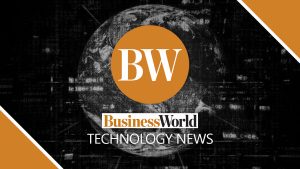How hybrid work can lead to sustainable practices

FILIPINOS now prefer to work in a hybrid setup and studies have shown that it not only opens many benefits for the employees, but new possibilities for the employers. This includes revisiting operations and embedding more sustainable business practices in ways that can dramatically change their consumption patterns such as reducing their environmental footprint by equipping employees with tools that are better for productivity and the planet, and appealing to worker preferences in an increasingly competitive labor market.
HP, for example, has outlined bold sustainable impact goals and commitments over the next decade. It aims to be the most sustainable and just technology company in the world by 2030, ushering a new era of progress where climate change is reversed, human rights are universally protected, and digital equity democratizes opportunity for all. Sustainable impact has been a part of the company’s DNA from the very beginning. It is proven to be one of the strategic drivers that accelerate and scale growth for the business.
A WIN-WIN-WIN OPPORTUNITYImproving sustainability through the transition to hybrid work provides benefits for employers, employees, and the environment, all at the same time. That’s because many of the systems, measures, and technologies that create a better hybrid work experience also enable more-efficient management of physical office resources, from smarter use of space to the conservation of energy and water.
Realizing the potential benefits of adapting to not only hybrid work but also an overall sustainable business — where work is conducted in the space that best suits the task at hand — brings with it an opportunity to adopt an “only-what-we-need-when-we-need-it” approach to resources, ranging from power to square footage.
“We’re now basing facilities decisions on utilization, not headcount,” says Rena Marin, country HR head of HP, Inc. in the Philippines. “We’re creating more choice for employees, including multifunctional areas that can be adapted to meet their needs.”
In some cases, that could mean moving walls to turn individual cubicle space into open collaboration areas, or incorporating movable, adjustable office furniture that employees can reconfigure as necessary. Organizations may also choose to eliminate personal workspaces altogether and replace them with hot desks, or shared workstations that employees can reserve for use when they’re in the office.
SMART FACILITIES THAT CONSERVE RESOURCESA range of technologies can help companies pinpoint what resources they need, when and where they need them, increasing efficiency and conservation.
This includes a number of solutions that use Wi-Fi connectivity combined with sensors to determine how rooms and offices are being used, and how frequently. With that data, organizations can turn off power, heating, and cooling in empty spaces or implement a smart heating and lighting system.
Additionally, by tracking occupancy across the building, some software can also allow employees to check which rooms are available for an impromptu meeting; book a workstation in advance of their arrival; or see which colleagues are working from the office each day.
DOING MORE WITH LESS (WASTE)Equipping hybrid employees with new tools and tech to do their jobs in a hybrid world not only helps them maintain productivity wherever they are, but also gives businesses a chance to choose more sustainable devices.
The most important piece of equipment for any hybrid employee is a powerful and portable laptop, such as the HP Elite Dragonfly, the HP Elite c1030 Chromebook, or the HP ZBook Studio mobile workstation, all of which include components made from recycled ocean-bound plastic and long-lasting batteries for seamless transition between home and office.
While many companies adapted quickly to remote work with more mobile devices and cloud solutions, one area that often posed a challenge for remote workers was printing — especially for those who didn’t have printers at home, or needed to print frequently.
“The pandemic has reinforced the idea that work is not a separate place, and for many people that involves printing where they are,” says Christian Edmond Reyes, Philippines managing director of HP, Inc. “Just like we’ve seen with computing, printing needs to adapt to hybrid work in terms of mobility.”
HP Roam for Business addresses that challenge, allowing mobile workers to safely and securely submit print jobs on the go, from any device and any location, and then print only when they are at an HP Roam-enabled printer. This gives hybrid employees flexibility and security, and also helps reduce wasted energy, paper, and supplies from unintentional prints. This added layer of efficiency can even reduce printing needs by 15% to 30%, according to HP studies.
CUTTING THE COMMUTEAccording to the Climate Change Commission (CCC), transportation is the third-largest contributor to the country’s greenhouse gas emissions. Netherlands-based technology specialist TomTom’s 2020 Traffic Index reported that commuters lost an average of 188 hours in traffic that year, or the equivalent of seven days and 20 hours.
With Filipinos staying home due to the ongoing pandemic and work hybrid setups, many did not have to experience the difficulties of traffic and commuting.
“With the workplace changing so rapidly, there is a collective responsibility to maintain a strong focus on sustainability as we not only adapt, but innovate in the face of change,” shares Mr. Reyes. “The opportunity to evolve work in a more ethical and sustainable way is there for the taking. It’s up to all of us, as citizens of the planet, to do it in such a way that helps not only the company and the employees, but the world around us.”
HP, Inc. is a technology company that believes one thoughtful idea has the power to change the world. Its product and service portfolio of personal systems, printers, and 3D printing solutions help bring these ideas to life. For more information about HP, visit http://www.hp.com.




